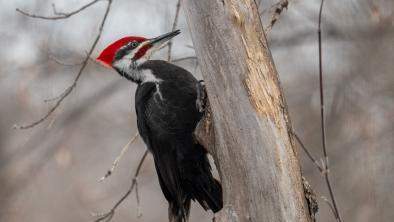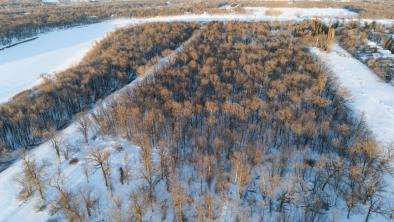Tribal Parks: A Conversation with Conservation

A couple weeks back we had an opportunity to sit down with the Minister for Conservation and Water Stewardship, Gord Mackintosh, to talk about provincial parks in Manitoba.
Minister Mackintosh is building a new park plan, and wanted to hear thoughts and ideas. He brought up several concepts being considered for the parks plan as a benefit to Manitobans. Thought is going into how to get more people out to parks, with emphasis being placed on the health benefits of getting people out in nature. There is a specific focus on getting kids into parks as well. An effort is being made to both ‘green’ and improve existing infrastructure at the same time. The overall plan is also going to include a way to make provincial parks economically sustainable.
We discussed several different issues with the creation of new parks, from animal protection to cottages to quad trails to a final ban on mining in parks. The highlight of the meeting for me, though, was a discussion of establishing tribal parks in Manitoba.
What is a tribal park?
A tribal park is established by a First Nation protecting their traditional territory from industrial development. The basic tenet of a tribal park is that traditional activities like medicine collecting, hunting and ceremonial activities on the land continue and are encouraged, but the land is protected from mining, logging and other industrial developments. The other essential component of a tribal park is the on-the-ground management of the territory by local community members.
Tribal parks have been established in B.C., with the Stein Valley Nlaka’pamux Heritage Park being an example of joint management between the provincial and First Nations governments. In the Stein Valley, members of the Lytton First Nation patrol the trails as Stein Valley Wardens—ambassadors on the land.
Recently, representatives from Australia were in Canada promoting a program that has had success down under—the “Working on Country” Indigenous ranger program—where local Indigenous people work to ensure their community lands are preserved. Manitoba is already running a scaled-down version through its River Stewards program, which employs local community members to be out on rivers such as the Manigotagan River, ensuring the portages and campsites are kept in good shape.
Poplar River First Nation was the first community in Manitoba to establish protection for its traditional territory, with the Asatewisipi Aki Management Plan. This community land use plan was given full legislative protection under the East Side Traditional Lands Planning and Special Protected Areas Act, legislation that only applies to First Nations in the Heart of the Boreal region.
The Wilderness Committee is pushing the Manitoba government to adopt a substantive target of getting 20 per cent of Manitoba protected by 2020. Recently the government has committed to establishing 15 new provincial parks in the coming years. As Minister Mackintosh assembles a plan for provincial parks, the Wilderness Committee will be pleased to see new tribal parks as part of our protected areas goals.
Finally, here is a quote from the Stein Declaration signed by Lytton Chief Ruby Dunstan and Mt. Currie Chief Leonard Andrew on October 5, 1987:
"Under the cooperative authority of our two bands we will maintain the Stein Valley as a wilderness in perpetuity for the enjoyment and enlightenment of all peoples and the enhancement of the slender life thread on this planet.”
This is the path forward for new protected lands in Manitoba.
Eric Reder
Manitoba Campaign Director
Photo: First Nations drumming in BC's Stein Valley (Nlaka'pamux Heritage Park), a template for successful tribal parks in Canada. Image from WC files.


